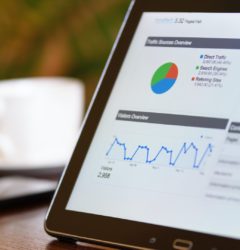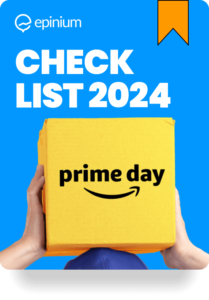Introduction to Amazon FBA tools
As an Amazon seller, understanding how to effectively utilize Amazon FBA Calculator tools is crucial to your success. These tools are not just about number crunching; they’re about strategically managing your business to maximize profits. This post will explore key tools and strategies that can help you optimize your selling experience on Amazon. Let’s dive into the essentials of these calculators and how they can make your selling journey smoother.
What is the Amazon FBA Estimator?
The Amazon FBA Estimator is a vital tool for forecasting potential costs and profits based on your inputs. It helps you understand the financial implications of your listings, providing a snapshot of expected fees and earnings. This tool simplifies the complexity of managing an inventory on Amazon by offering a clear view of the potential return on investment for each item you plan to sell. By inputting details such as item cost, selling price, shipping fees, and other expenses, the FBA Estimator calculates not only your potential fees but also the profit margins you can expect. This transparency is crucial for making informed decisions about pricing, promotions, and inventory management, allowing you to strategize effectively and maximize your profitability on the Amazon platform.
Amazon FBA vs. Amazon FBM
Choosing between FBA (Fulfillment by Amazon) and FBM (Fulfillment by Merchant) is pivotal in defining your Amazon business strategy. Here’s a breakdown of each option:
Fulfillment by Amazon (FBA)
- Hands-Off Approach: Amazon takes on the heavy lifting, handling storage, shipping, and customer service.
- Benefits: Ideal for scaling operations without increasing your workload; products become eligible for Amazon Prime, which can boost sales.
- Drawbacks: Involves fees for storage and fulfillment, which can add up, especially for slow-moving products.
Fulfillment by Merchant (FBM)
- Hands-On Management: You’re in charge of all logistics, from storing products to shipping them out.
- Benefits: More control over inventory and customer service, potentially reducing costs if you can manage logistics efficiently.
- Drawbacks: More time-consuming and requires substantial organization and resources to manage effectively.
When deciding between FBA and FBM, consider the following
- Scale of Operations: How large is your business, and what kind of infrastructure do you have?
- Resources: Do you have the capacity and systems in place to handle logistics?
- Business Goals: Are you aiming for rapid growth or maintaining more control over every transaction?
Your choice between FBA and FBM will shape your operational strategy and can significantly impact your profitability and growth trajectory. Make sure to align this decision with your overall business objectives for optimal results.
Mastering the calculators
How to use the Amazon FBA calculator
The Amazon FBA Calculator is an indispensable tool for any seller looking to understand the detailed financial impact of using Amazon’s fulfillment services. Here’s how to effectively use this calculator:
- Input Details: Start by entering the cost of your product, the selling price, estimated shipping costs, and any additional expenses related to your product.
- Calculating Fees: The calculator then breaks down the various fees charged by Amazon, including fulfillment fees and monthly storage costs, which are automatically calculated based on the dimensions and weight of your product.
- Reviewing Net Earnings: After all fees are subtracted, the calculator displays your net earnings. This is what you will actually receive after all costs have been accounted for.
This tool is especially valuable for
- Scenario Analysis: Experiment with different pricing strategies or cost structures to see how changes affect your profitability.
- Profit Optimization: Identify the optimal price points and product configurations that maximize your profit margins.
By regularly using the Amazon FBA Calculator, you can fine-tune your business strategy, ensuring that you are always aware of how costs, pricing, and other variables affect your bottom line. This proactive approach can help you make smarter decisions, leading to more effective management of your Amazon store.
Finding seller profits with the Amazon FBA profit calculator
The Amazon FBA Profit Calculator is designed to give you a clear insight into your financial performance, highlighting the difference between your revenue and actual profits. Here’s how you can make the most of this tool:
- Enter Product Details: Input the cost of your product, selling price, and any additional costs such as shipping, manufacturing, or packaging.
- Calculate Amazon Fees: The tool automatically calculates necessary Amazon fees, including referral fees and FBA fees, which are based on your product category and size.
- Assess Profitability: The calculator provides a detailed breakdown of your net profit, showing what you earn after all costs and fees are deducted. This is your actual take-home amount from sales.
Using the Amazon FBA profit calculator helps you
- Adjust Pricing: See how different pricing strategies impact your profits. You can experiment with various selling prices to find the balance between competitiveness and profitability.
- Cost Management: Identify which costs are cutting into your profits the most and find ways to reduce them without sacrificing quality.
Regular use of the Amazon FBA Profit Calculator allows you to stay on top of your financial health, ensuring that your pricing and cost strategies are aligned with your overall business goals. By understanding precisely where your money is going, you can make informed decisions to boost your profitability on Amazon.
Analyzing FBA benefits and drawbacks
What are the benefits of using FBA?
Using Fulfillment by Amazon (FBA) can significantly enhance your operations and provide you with a competitive edge in the marketplace. Here are the key benefits:
- Amazon Prime Eligibility: Products fulfilled by Amazon are eligible for Amazon Prime, which can lead to higher sales. Prime products are more appealing due to faster shipping options.
- Increased Visibility: FBA products often rank higher in search results and are more likely to win the Buy Box, increasing their visibility and likelihood of purchase.
- Comprehensive Fulfillment Services: Amazon handles storage, packing, shipping, customer service, and returns, which reduces the logistical load on you as a seller.
- Scalability: FBA allows you to scale your business efficiently. As sales increase, Amazon’s robust fulfillment network can handle the increased demand without additional effort from you.
What are the cons of using FBA?
While FBA offers numerous advantages, there are also several potential downsides to consider:
- Costs: FBA can be costly, especially for products that are large, slow-moving, or have low turnover, due to fees for storage, packing, and handling.
- Complex Inventory Management: Managing your inventory in Amazon’s warehouses requires careful planning to avoid long-term storage fees and to keep stock at optimal levels.
- Control Over Customer Experience: With FBA, Amazon controls the packing and shipping process, which means you have less control over the customer service experience.
- Returns and Refunds: FBA has a liberal returns policy, which might lead to a higher rate of returns and the associated costs and complexities.
These cons require careful consideration. You’ll need to weigh them against the benefits to determine if FBA is the right choice for your specific business needs and objectives. This balance will depend on your product types, business model, and growth strategy.
Financial insights for Amazon Sellers
How do you calculate profit on Amazon?
Calculating profit on Amazon requires a clear understanding of both your income and expenses. Here’s a straightforward approach to determining your profitability:
Total Revenue
Start with your total sales revenue, which is the amount you earn from selling your products before any expenses are deducted.
Subtract Costs
Deduct all associated costs from your total revenue. These costs include:
- Product Costs: The cost of sourcing or manufacturing your products.
- Amazon Fees: This includes referral fees, FBA fees if applicable, and any other fees charged by Amazon.
- Shipping Costs: Both to the customer and any costs for sending inventory to Amazon.
- Miscellaneous Expenses: Packaging, promotions, and any other operational costs.
Net Profit
The amount remaining after all costs have been subtracted from your total revenue is your net profit.
To streamline this process, using tools like the Amazon Profit Calculator is highly recommended. These tools automatically account for all typical Amazon fees and help you simulate different scenarios to see how changes in costs or pricing affect your profitability. By regularly reviewing these calculations, you can adjust your pricing strategies, reduce costs, or even identify unprofitable products to improve your overall financial performance on Amazon.
Amazon’s Cut: How much profit does Amazon take from sellers?
Amazon charges sellers a range of fees, which can significantly impact your overall profitability. These fees generally include:
- Referral Fees: A percentage of the selling price, varying typically between 6% and 45%, depending on the product category. Most categories fall in the 15% range.
- Fulfillment Fees: For those using FBA, these fees cover the cost of storage, packing, and shipping. They vary based on the size and weight of the product.
- Monthly Inventory Storage: This fee is charged for the storage of items in Amazon’s warehouses and is calculated per cubic foot. It varies seasonally, with higher rates during the peak holiday season.
Profit margins: What is a good profit margin for selling on Amazon?
A “good” profit margin varies widely depending on the product category, competition, and operational efficiency. However, a general target for many Amazon sellers is a margin of at least 20-30%. This range allows for a sustainable operation that can absorb fluctuations in costs and sales volume without compromising the business’s financial health. It’s also vital to account for the additional costs of promotions, returns, and other operational expenses when calculating these margins.
Calculating your profit margin on Amazon FBA
To accurately calculate your profit margin when using Amazon FBA, consider all relevant costs, including product costs, shipping to Amazon’s warehouse, FBA fees, and any marketing or promotional costs. The Amazon Seller Calculator is an invaluable tool here, as it helps factor in all these costs to provide a clear view of your net profit per item sold.
By regularly analyzing your profit margins using these tools, you can make informed decisions about pricing, promotions, and inventory management to ensure your Amazon FBA venture remains profitable. This strategic approach not only helps in maintaining a healthy profit margin but also aids in planning for future growth and expansion on the platform.
Advanced fee and profit calculations
Tools for calculating Amazon FBA Fees
Various tools are available to help Amazon sellers estimate the costs associated with using Fulfillment by Amazon (FBA). These tools are crucial for maintaining profitability by providing clear insights into the fees that will affect your bottom line. Here are some of the most commonly used tools:
Amazon FBA Calculator
This is an official tool provided by Amazon, designed to help sellers understand the specific fees associated with FBA for each item. It considers factors like item size, weight, and storage duration to provide an estimate of total fees.
FBA Revenue Calculator
Similar to the FBA Calculator but focuses more on comparing the potential revenue you can earn by using FBA versus handling fulfillment yourself (FBM).
Third-Party Tools
Several other software solutions offer more detailed analyses and features, such as inventory management integration and more comprehensive cost breakdowns. These tools can also help forecast long-term profitability and manage pricing strategies more dynamically.
Using these tools effectively involves regularly updating your product details and keeping abreast of any changes in Amazon’s fee structure. This proactive approach ensures that you are always aware of the costs associated with FBA and can adjust your pricing and inventory decisions accordingly. Regular use of these calculators can help you minimize fees and maximize your profit margins, turning potential financial surprises into well-planned budget items.
How to accurately calculate Amazon FBA Fees
To accurately calculate Amazon FBA fees, it’s essential to use detailed, up-to-date information about your products and their handling. Here’s how to do it effectively:
- Use the Amazon FBA Calculator: Enter specific details about your product, including dimensions, weight, and selling price. This tool calculates not only the fulfillment and storage fees but also provides insights into possible monthly sales and revenue.
- Include All Relevant Costs: Make sure to consider costs beyond just the basic fees, such as prep service fees, labeling fees, and long-term storage fees, which can accrue if inventory is not managed properly.
- Regular Updates: Update your calculations regularly to account for changes in fees or your product details, ensuring you always have the most accurate cost analysis.
This approach will help you understand the full scope of fees associated with FBA, enabling you to price your products competitively while maintaining profitability.
The earnings of an average Amazon FBA Seller
Earnings for Amazon FBA sellers can vary widely based on factors like product category, pricing strategy, and operational efficiency. Here are key points to consider:
- Average Earnings: Many new sellers might see profits starting from a few hundred to several thousand dollars per month, depending on the scale of their operations and market conditions.
- Impact of Scale: Sellers who can scale their business and optimize their listings typically see higher earnings.
- Continuous Optimization: Regularly analyzing and adjusting your business approach based on performance data and market trends is crucial for increasing earnings over time.
Setting realistic expectations and being prepared to adapt your strategy are essential for achieving success as an Amazon FBA seller.
Is Amazon FBA still profitable in 2024?
In 2024, Amazon FBA remains a profitable option for many sellers, but it requires strategic planning and efficient management:
- Market Saturation: As the marketplace becomes more competitive, sellers need to differentiate their products and optimize their listings to maintain profitability.
- Cost Management: Keeping a close watch on FBA fees and other costs is essential to ensure that profit margins remain healthy.
- Adaptation to Changes: Being responsive to changes in Amazon’s policies and customer preferences can help you stay profitable.
Staying informed about trends and continuously optimizing your business model are key to sustaining profitability with FBA.
Defining a good profit margin for Amazon FBA Sellers
A good profit margin for Amazon FBA sellers should cover all operational costs and support business growth. Here are some strategies to achieve this:
- Cost Reduction: Look for ways to reduce production and procurement costs without compromising quality.
- Efficient Pricing: Set prices that are competitive yet high enough to ensure a healthy margin after accounting for all fees and costs.
- Regular Review: Periodically review your profit margins to adjust for any fluctuations in costs or changes in the market environment.
Aiming for a profit margin that allows for both reinvestment in the business and some profit-taking is crucial for long-term sustainability. This approach ensures you are not only covering costs but also growing your business and securing your financial future.
Wrap-up on optimizing your Amazon FBA strategies to boost your profit margins and overall success as an Amazon seller in 2024.
As you continue to navigate Amazon FBA in 2024, remember that success hinges on effective strategy and efficient use of the tools at your disposal. Keep your operations lean, your data up-to-date, and your strategies flexible to adapt to market changes. Regularly using Amazon’s FBA calculators can help you maintain competitive pricing and manage costs efficiently. By staying proactive and adaptable, you can enhance your profitability and secure your success in the ever-evolving marketplace. Here’s to your continued success on Amazon!






